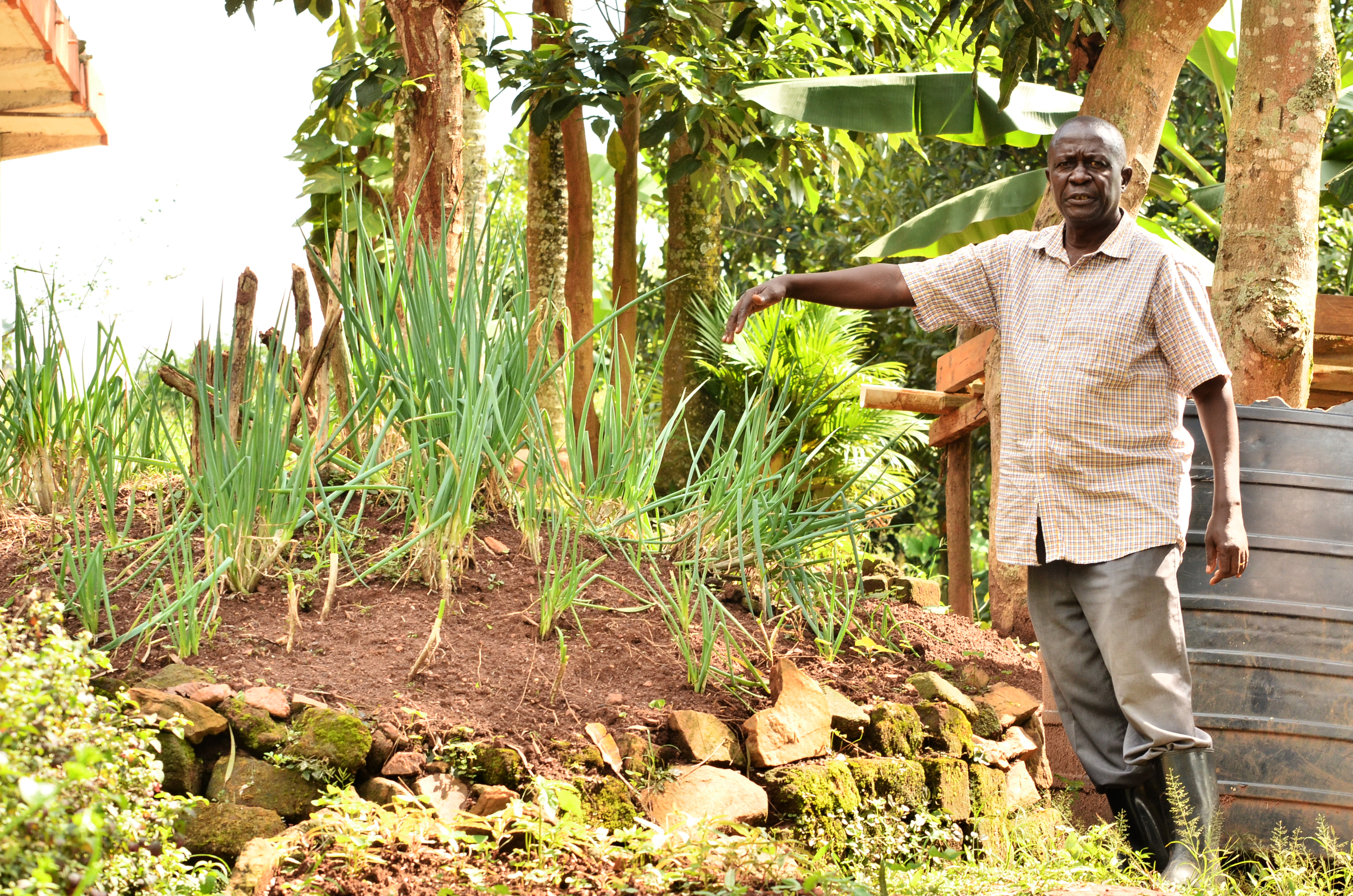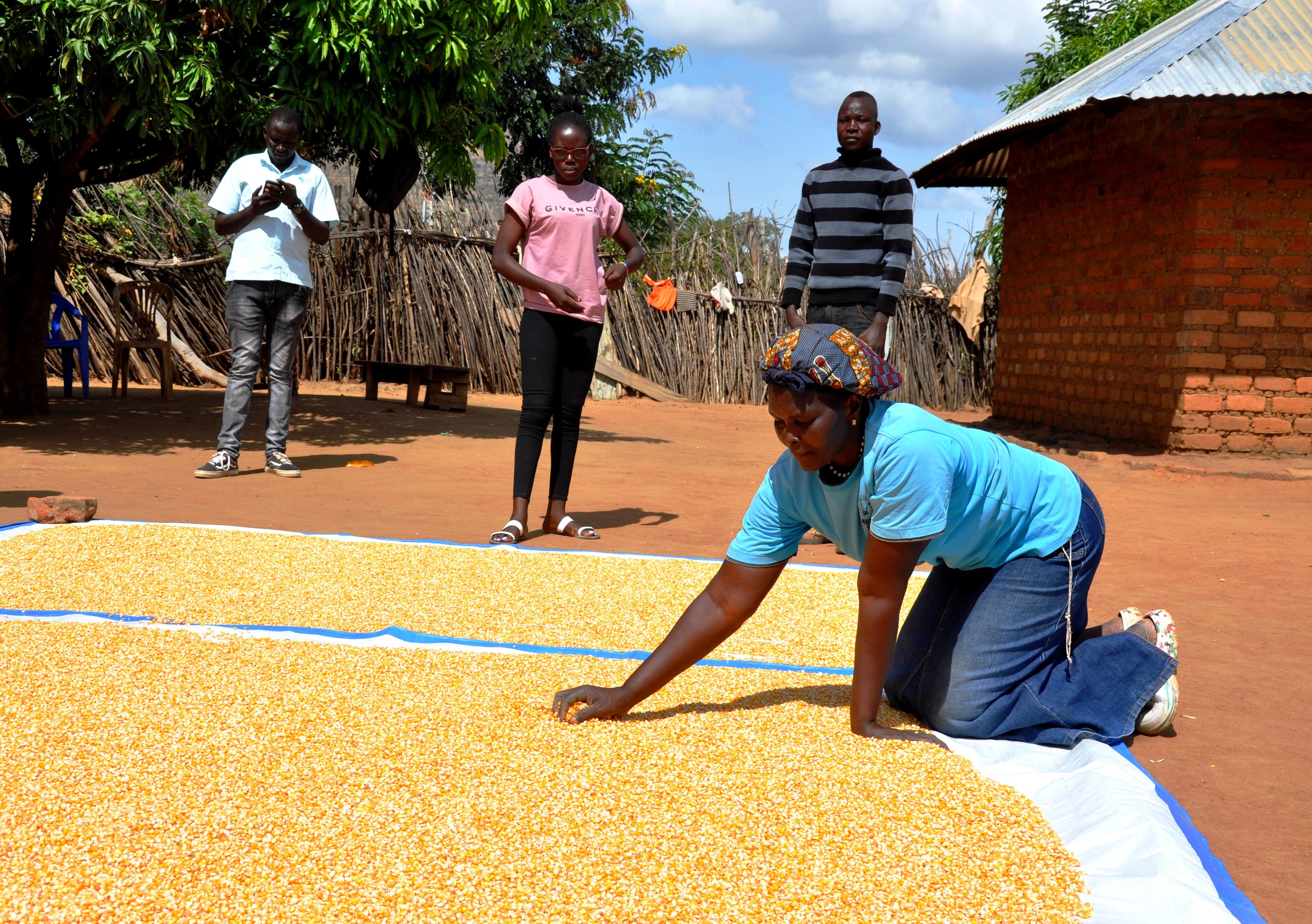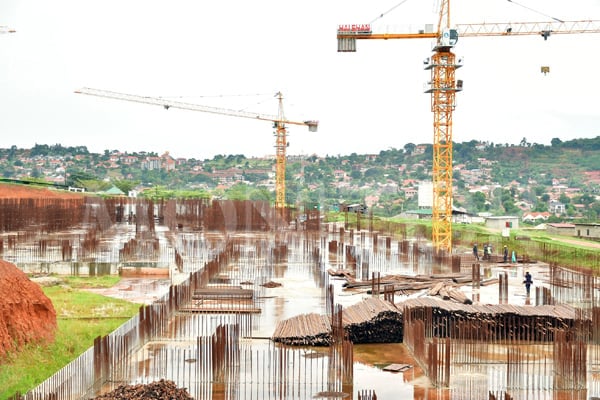How farmers can contribute to climate smart agriculture

Timothy Njakasi, an organic farmer in Kasenge in Mukono says extension workers help in transmitting new information. PHOTO/FILE
What you need to know:
- In enhancing soil fertility, the soils should be protected from wind and water erosion. Mulching offers this and more.
Agriculture is highly dependent on sustainable weather patterns. This is why climate change is a risk factor among crop growers around the globe.
Studies show that climate change might likely reduce harvests in healthy farm yields by 17 percent by 2050.
According to experts, farmers require the much needed support to embrace climate-smart agriculture.
In order to enhance food security, actors in the sector such as GIZ have offered trainings through farmers’ cooperatives in the most affected regions of Lira, Oyam, and Kitgum, among others. Here they list ways in which farmers can advance agricultural productivity through climate smart practices in managing landscapes against negative effects of climate change.
However, they note that these approaches vary differently between regions and urge farmers to select technologies that suit their particular circumstances.
Agroforestry
Diversification in crops allows for productivity all year round. Agroforestry offers this diversity through an integrated system of trees and crops planted on the same piece of land over time.
According to Sonja Esche, the coordinator for rural development programme at GIZ, this approach allows for each plant to be selected for a particular purpose.
She explains, “Agroforestry offers a wide range of crop species which in return increases soil organic matter content and improves water balance.”
This technique also contributes to soil conservation. Eseri Nankya, a soil scientist at Naro, Mukono says “it helps in enhancing resilience in climate change through improving soil and water availability with its diverse nature in tree species.”
To increase water availability, Nankya hints on seasonal planting. She tips, “Ensure to follow the crop calendar and plant crops in time in order not to be caught up by the drought.”
For regions that have lost relative tree cover, the soil expert also recommends farmers to adopt zai pits or permanent planning basins a concept borrowed from Burkina Faso, in dry land farming.
She adds, “These pits are applied in dry regions as they help farmers optimise little rains through water harvesting to improve moisture and fertiliser optimisation.”
Sonja applauds these pit technique of retention ditches, terraces, and trenches as well as water harvesting with ponds to accommodate proper or safe water drainage in ways that minimise soil erosion, land sliding or soil nutrient loss.
He also tips farmers to utilise drought-tolerant crops to survive dry conditions better than other varieties. These she adds report good production even during periods of drought.
Soil fertility management
Despite climate variability, experts tip farmers on how to incorporate compost or fertilisers to speed up agricultural productivity.
“Farmers should adopt soil fertility techniques such as green manure, cover crops and compositing to ensure better yields,” Sonja suggests.
This attention given to soil textures also increases water retention capacity through accumulation of organic matter.
Additionally, the expert recommends the approach in improving chemical, biological and physical properties of the soil hence enhancing climate-smart agriculture.
In enhancing soil fertility, Sonja notes that the soils should be protected from wind and water erosion adding that mulching offers this and more.
He shares, “The use of straw, leaves, crop residues, green manure crops, and saw dust to cover the soil surface also improves the infiltration of rain and irrigation water by maintaining a good soil structure.”
The soil expert also advices farmers to embrace conservation farming which minimises soil disturbance and preserves soil against stress of soil moisture.
She explains, “In strip farming, farmers are encouraged to open up soils where the seed is placed and other areas covered with crop residue to enhance moisture retention in the soil.”
Additionally, Sonja tips on other soil conservation techniques such as vegetation trenches, among others, to conserve soil and allow for water penetration into crops.
Intercropping
The planting of two or more crops in the same field such as maize and beans reduces economic vulnerability by diversifying production.
The expert notes, “This practise increases yields and income, improves soil quality and water efficiency, soil use.”
Conclusively, intercropping can strengthen and stabilise ecosystems under climate change by improving resource use efficiency and enhancing soil water retention, among other functions.
Advice
Eseri Nankya, a soil scientist at Naro, advices farmers to embrace conservation farming which minimises soil disturbance and preserves soil against stress of soil moisture.





